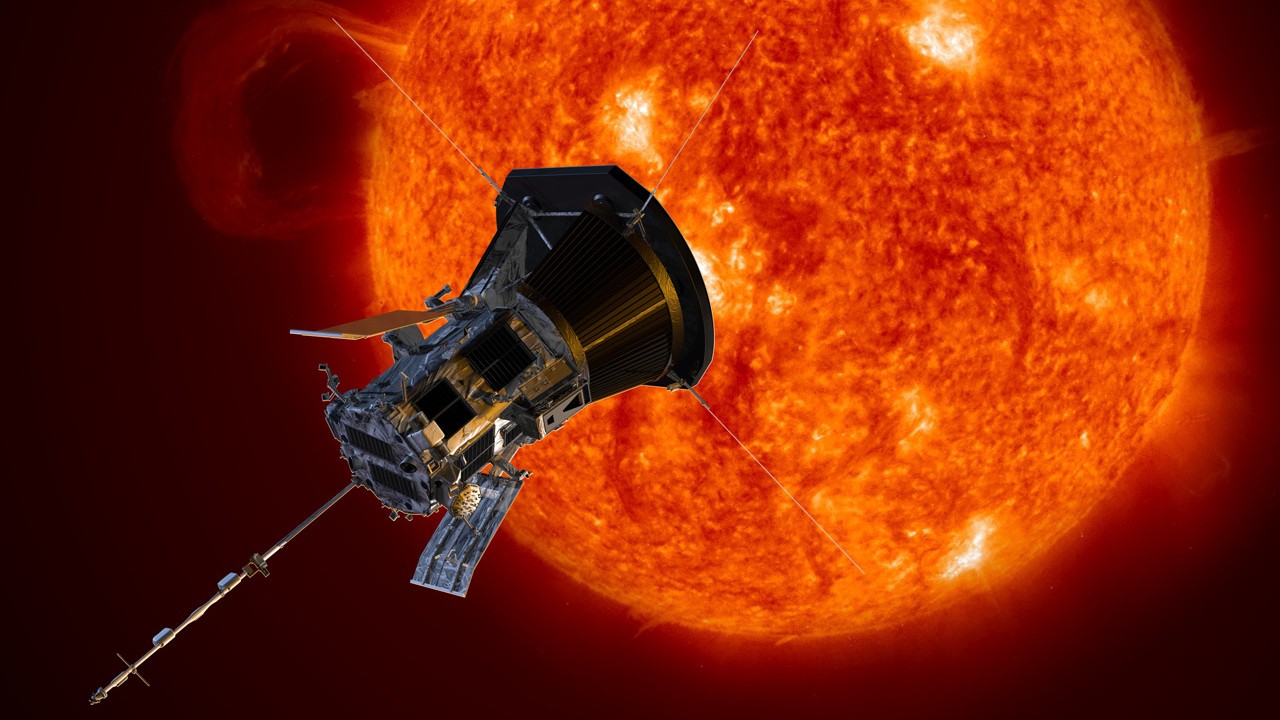
NASA's Parker Solar Probe has already gotten closer to the sun than any other human-made object. Yet, later this year, the star-skimming spacecraft will get even closer — all while traveling faster than its previous top speed.
The solar observatory — which, on Dec. 28, 2023, completed its 18th close flyby of the sun — will once again approach our star on Dec. 24, 2024. During this encounter, it will come within around 3.8 million miles (6.1 million kilometers) of the photosphere, which can be roughly considered the sun's surface. (The sun is a ball of gas, so it doesn't really have a surface.) To do so, the spacecraft will brave temperatures of around 2,550 degrees Fahrenheit (1,400 degrees Celsius).
"We are basically almost landing on a star," Nour Raouafi, an astrophysicist at the Johns Hopkins University Applied Physics Laboratory and project scientist for the Parker Solar Probe mission, told BBC News. "This will be a monumental achievement for all humanity. This is equivalent to the Moon landing of 1969."
Related: 1st mission to 'touch' the sun discovers a mysterious source of solar wind
Parker Solar Probe: Higher, farther, faster in 2024
Parker launched from Cape Canaveral, Florida, in August 2018, and on Sept. 27, 2023, it made its current closest approach to the sun, coming within 4.51 million miles (7.26 million km) of the solar surface and hitting a speed of around 395,000 mph (636,000 km/h).
The Christmas Eve 2024 close flyby will also break the probe's previous speed record . As Parker gets closer to the sun, the immense gravitational influence of our star will accelerate the spacecraft to around 435,000 mph (700,000 km//h). That's around 300 times as fast as the top speed of a Lockheed Martin F-16 fighter jet and about 200 times as fast as a bullet fired by a rifle, further cementing Parker's legacy as the fastest human-made object ever built.
Although these record-breaking achievements are staggering, Parker's true aim is to discover more about the sun. There is one particular solar mystery that scientists are hoping to crack with this flyby: why our star's outer atmosphere is over 200 times hotter than the underlying surface. The corona's estimated temperature exceeds 2 million F (1.1 million C), while the photosphere is around 10,000 F (5,500 C).
That's confounding, because the source of the sun's heat is mostly the nuclear fusion occurring at its heart. The photosphere is is around 3,100 miles (5,000 kilometers) closer to this core, at the least, than the corona is; the latter extends around 5 million miles (8 million km) from the sun's surface. It would be like toasting marshmallows on a campfire and finding that the treats burn more quickly when they were farther from the fire.
To answer this question, Parker will fly through the corona and collect data. As part of this data collection, the solar probe flew through a massive outflow of stellar material called a coronal mass ejection (CME) in September 2022 and survived, despite it being one of the most powerful CMEs on record.
All good things must come to an end, though. The mission is scheduled to finish in 2025, after the probe's 24th flyby of the sun.







